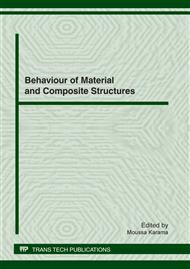p.126
p.139
p.151
p.161
p.173
p.187
p.199
p.210
p.219
3D Adaptive Remeshing Procedure and its Application to Large Deformation Problems
Abstract:
Metal orthogonal cutting and blanking are two important forming processes which include material removing. During finite element analyzing, the nonlinear problems of boundary, material and geometry must be considered to obtain the accurate calculating results. In this paper, we present an advanced adaptive remeshing procedure which has the capacities to simulate material removing processes in three dimensions. The sizes of finite elements are well adapted to local conditions which have the high distributions of physical fields using priori and posteriori error estimates. Based on constraint Delaunay Kernel, the unit mesh strategy is proposed to improve the mesh quality. By optimizing of both mesh edges and mesh elements, the mesh shape qualities are strictly controlled as the regular tetrahedrons. In this paper, Johnson-cook model is considered to simulate the elastic-visco-plastical material behaviors. The damage initiation is also judged by Johnson-cook criterion. The finite elements which reach the criterion will be killed and the material removing processes finished step by step. The proposed adaptive remeshing scheme is well present using the simulation of metal orthogonal cutting, milling and blanking processes.
Info:
Periodical:
Pages:
199-209
Citation:
Online since:
January 2012
Authors:
Price:
Сopyright:
© 2012 Trans Tech Publications Ltd. All Rights Reserved
Share:
Citation:


